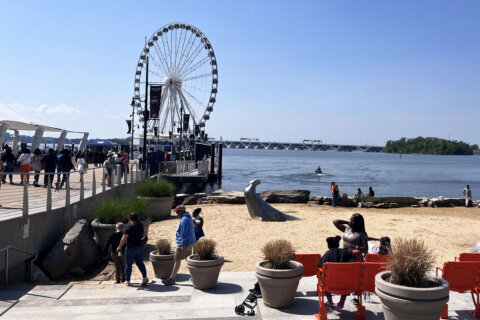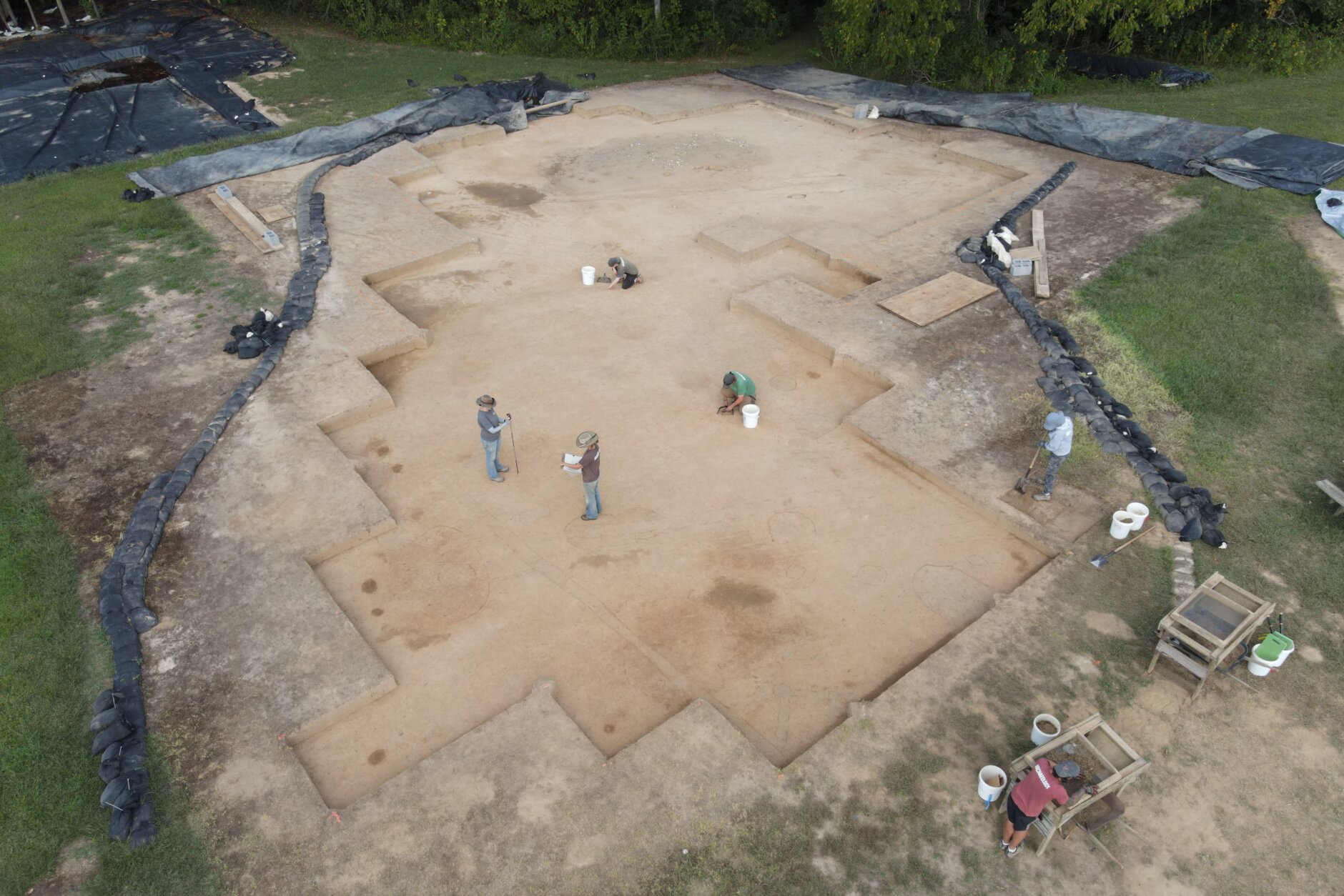
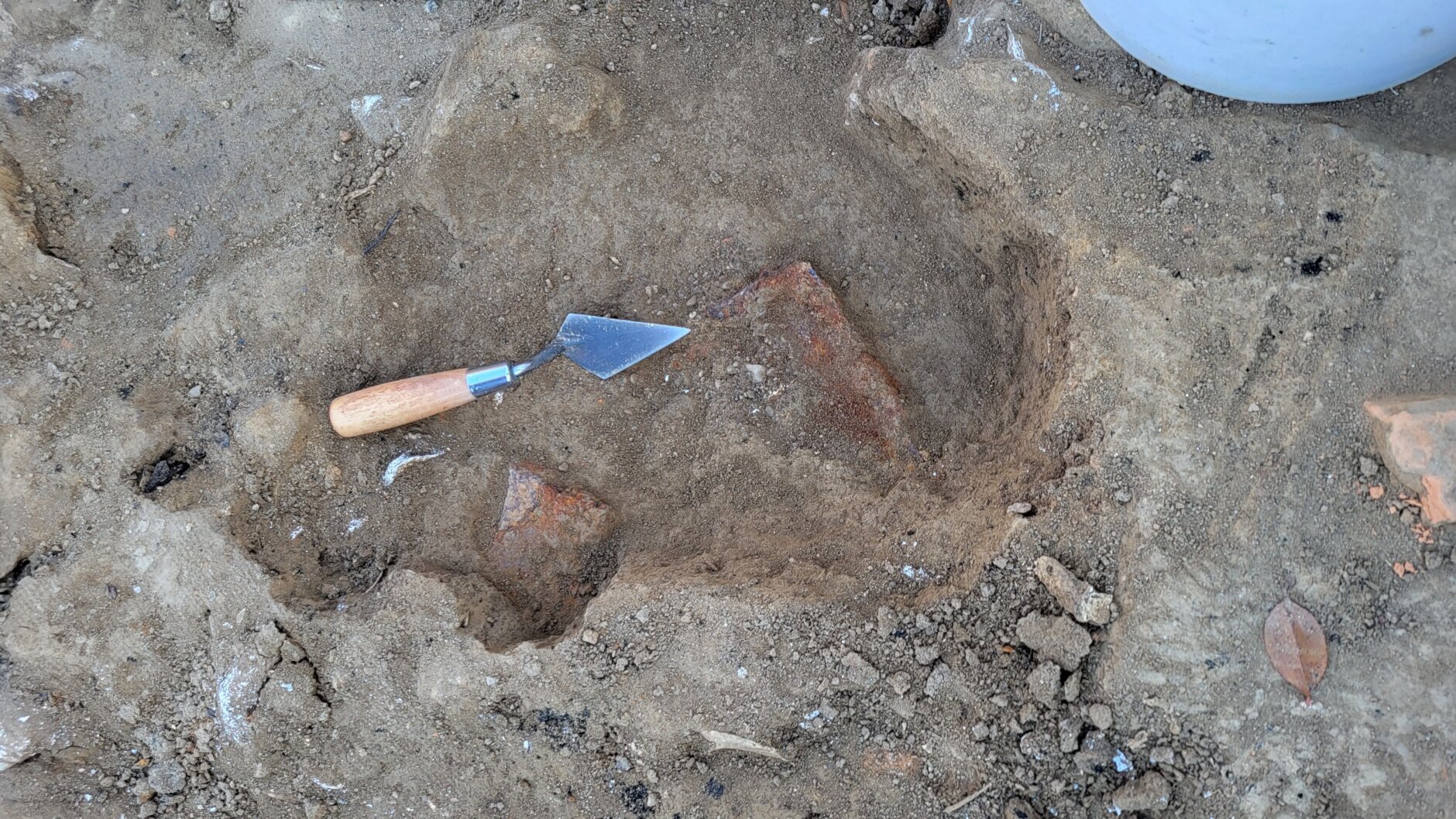
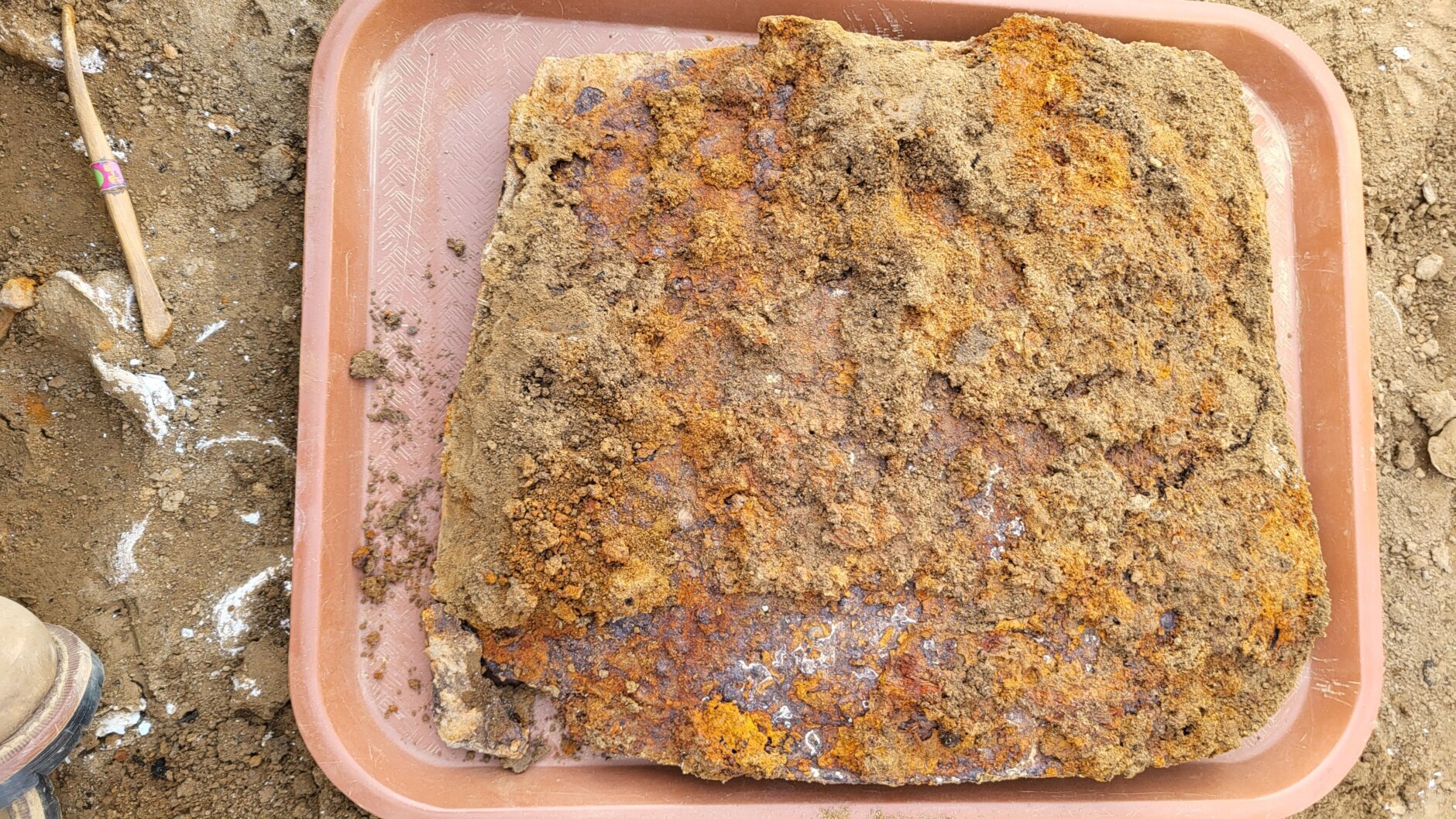
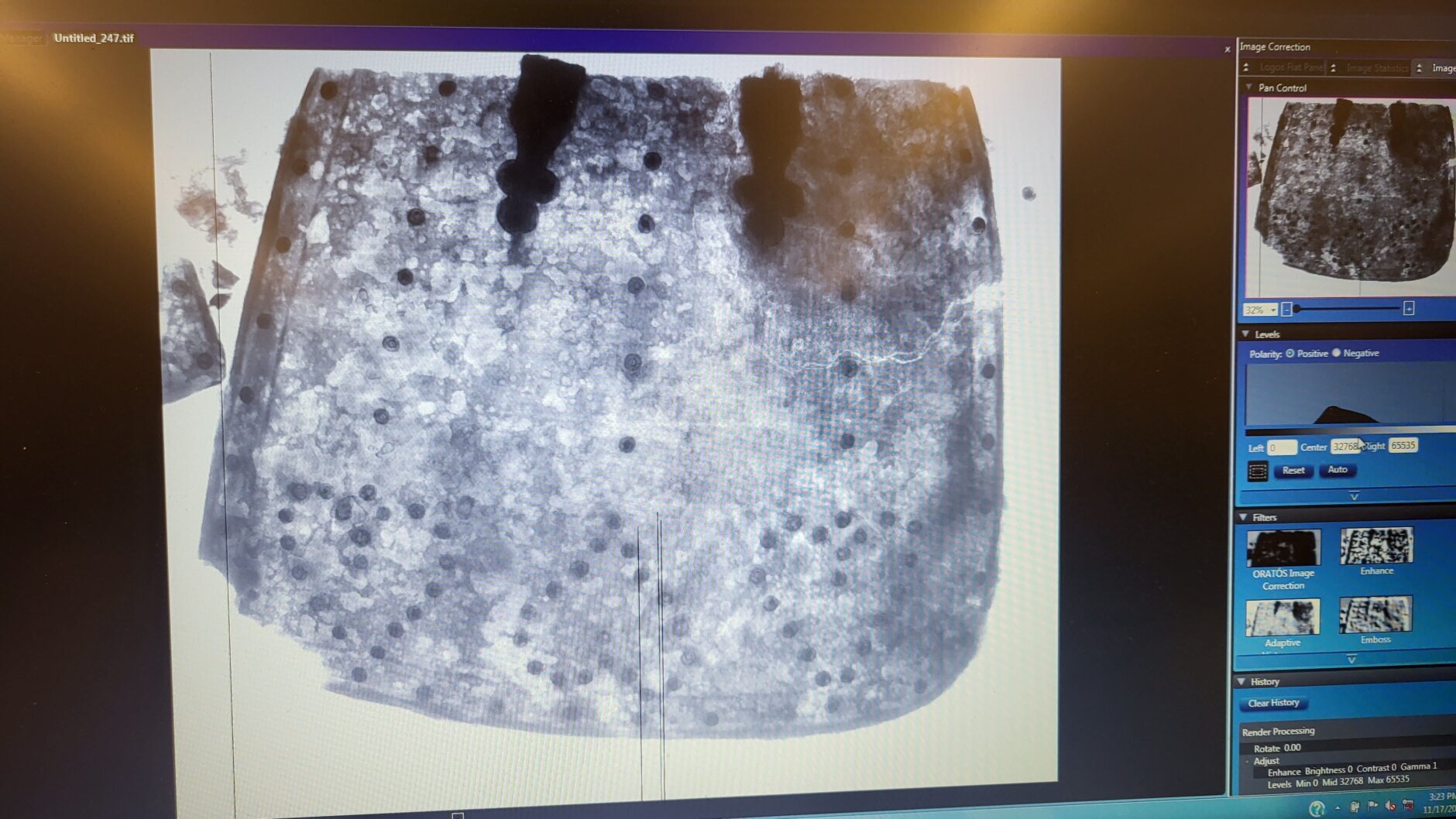
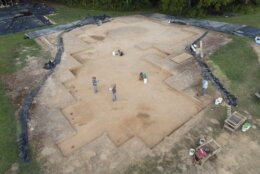
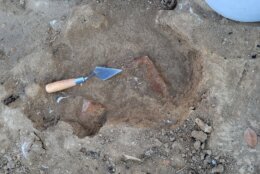
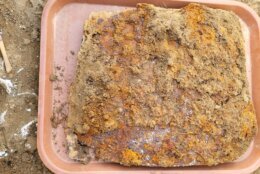
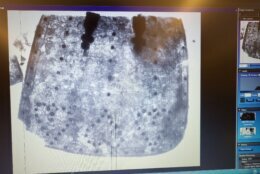
There’s little historians know about Maryland’s early colonial past. So, when archaeologists in St. Mary’s City uncovered a nearly 400-year-old piece of battle gear last month, researchers celebrated.
“This was definitely an exciting moment. Our eyebrows rose,” said Travis Parno, director of research and collections at Historic St. Mary’s City, told WTOP. “We were whooping and hollering. It was really dramatic.”
What they discovered was a tasset, a piece of plate armor designed to protect the upper thigh. Tassets were part of colonial-era armor kits that typically included a metal breastplate that held up the leg shields.
The artifact was heavily encrusted in soil and debris and removing the dirt could have damaged the battle gear. So, archaeologists turned to X-ray scans which confirmed the treasure and its link to Maryland’s first colonial capital, Parno said.
“You can see the bands of steel. You can see the rivets and buckles on it,” he said. “But seeing the pattern of hearts at the bottom was particularly poignant. Someone 400 years ago decided, ‘No, I don’t want the plain armor. I want the one with the hearts on it.’ And we can all relate to that.”
For the last four years, Parno’s team of archaeologists and historians have dredged up a football-field size area where they believe settlers built the colony’s first fort shortly after sailing from England and coming ashore in 1634.
It was one of the first things colonists did. The fort also included a cellar, which is where the tasset was unearthed.
“This artifact was almost assuredly brought over by one of these colonists,” Parno said. “It was probably someone who served in a military or militia in England. They brought it over and later decided it was no longer necessary.”
In 2019, a radar scan confirmed the site of the long-gone fort and its cellar. The St. Mary’s City team has been excavating in that area since 2020.
Documents from that time are sparse and the artifact will give researchers a better picture of life inside the fort, said Parno.
“This is really where Maryland’s colonial beginnings are located,” Parno said. “But we don’t have a lot of records of what life was like. So, having a resource of this cellar is going to give us a much better sense of that.”
The piece of battle gear is the second one found like it in historic St. Mary’s City. The first was discovered about 10 years ago, offering more clues on what was happening in the colony.
“If it happens once, that’s one thing. But if it happens twice, you start to think, ‘maybe this is a period that people’s ideas of what’s useful are starting to change,'” said Parno. “So, it must have been deemed not useful.”
The next step for the battle gear is preservation by a conservation team that will also prepare it for display opportunities.
Parno said excavation season is about to start as his team welcomes visitors to tour the historic area where they discovered the tasset.
“We have a tour that actually takes visitors out to the dig site,” he said. “They will actually share what they found that day. So, if you want to see these kinds of things unearth in real time, we encourage you to come down and visit us.”
Get breaking news and daily headlines delivered to your email inbox by signing up here.
© 2024 WTOP. All Rights Reserved. This website is not intended for users located within the European Economic Area.



